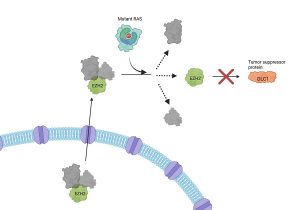Researchers review findings and clinical messages from the Women’s Health Initiative 30 years after launch

Media Advisory
Wednesday, May 1, 2024
Data from influential study underscore the importance of personalized and shared decision-making to support the health of postmenopausal women.
What
A new review in JAMA highlights key findings and clinical messages from the Women’s Health Initiative (WHI), the largest women’s health study in the United States. The WHI is supported by the National Institutes of Health’s National Heart, Lung, and Blood Institute (NHLBI), and was created to study factors that may reduce risks for cardiovascular disease, cancer, hip fractures, and other conditions in postmenopausal women. More than 68,000 women enrolled in clinical trials between 1993 and 1998 and were followed for up to 20 years.
After reviewing these long-term data, the researchers explain the primary findings:
Hormone therapy and menopause. The WHI study found that estrogen or a combination of estrogen and progestin, two types of hormone replacement therapies, had varying outcomes with chronic conditions, and the evidence does not support the use of these therapies to reduce risks for chronic diseases, such as heart disease, stroke, cancer, and dementia. The study was not designed to assess the effects of FDA-approved hormone therapies for treating menopausal symptoms, the benefits of which had been established before the WHI study began.
The authors reinforce the importance of women making shared decisions with physicians about the benefits or risks of taking hormone therapy during menopause. For example, women younger than age 60 with low-to-average risk for cardiovascular disease and breast cancer who want to take hormone therapy may experience greater health benefits than risks during early menopause to treat moderate-to-severe symptoms, such as bothersome hot flashes or night sweats.
Calcium and vitamin D supplements and bone fractures. A combined calcium and vitamin D supplement was not associated with reduced risks for hip fractures among postmenopausal women at average risk for osteoporosis, according to the study. However, the authors note that supplements can help fill nutrient gaps among women who do not meet the daily recommended intake for these nutrients. Therefore, women with questions about adequate intake and levels should consult with their healthcare provider.
Low-fat diets and cancer. A low-fat dietary pattern with at least five daily servings of fruits and vegetables and increased grains did not reduce the risk of breast or colorectal cancer. However, upon subsequent analyses during the follow-up period, researchers found that this type of eating pattern was associated with a reduced risk of death from breast cancer.
Findings from the clinical trials and study observations can vary based on multiple factors, such as age and underlying cardiovascular disease risks, so women ages 50 and older should work with their clinicians to make individualized and shared medical decisions, the researchers noted.
Who
Candice A. Price, Ph.D., program director of the epidemiology branch, located within the Division of Cardiovascular Sciences at NHLBI, is available to discuss this review.
Reference
Manson, JE, Crandall CJ, Rossouw JE, et al. The Women’s Health Initiative randomized trials and clinical practice: A review. JAMA; 2024. Doi: 10.1001/jama.2024.6542.
About the National Heart, Lung, and Blood Institute (NHLBI): NHLBI is the global leader in conducting and supporting research in heart, lung, and blood diseases and sleep disorders that advances scientific knowledge, improves public health, and saves lives. For more information, visit https://www.nhlbi.nih.gov.
About the National Institutes of Health (NIH):
NIH, the nation’s medical research agency, includes 27 Institutes and Centers and is a component of the U.S. Department of Health and Human Services. NIH is the primary federal agency conducting and supporting basic, clinical, and translational medical research, and is investigating the causes, treatments, and cures for both common and rare diseases. For more information about NIH and its programs, visit www.nih.gov.
NIH…Turning Discovery Into Health®








